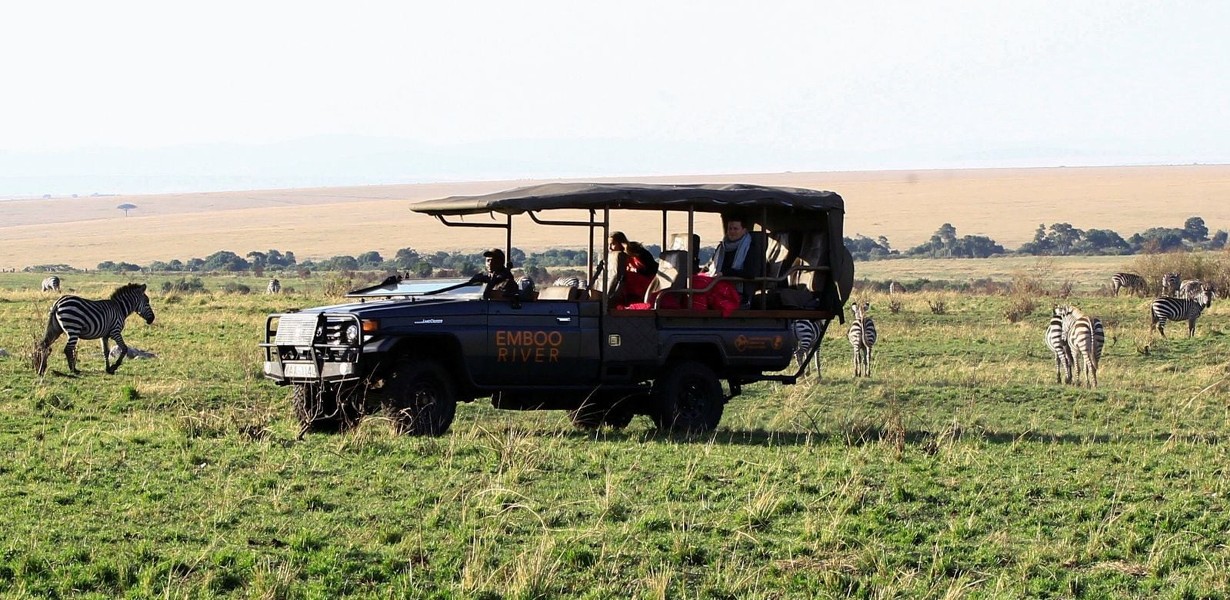
Embarking on an African safari has always been a dream for adventurers, nature enthusiasts, and wildlife aficionados. The opportunity to witness the majestic Big Five in their natural habitat, the untamed wilderness, and the breathtaking landscapes are what make African safaris a unique and unforgettable experience. However, technology has now transformed the traditional safari into Safari 2.0, enhancing the overall adventure with a blend of modern innovation and conservation. In this comprehensive guide, we’ll delve into how technology is revolutionizing the African safari experience.
Navigating the Savanna with Smart Devices
The first step in your Safari 2.0 adventure involves the use of cutting-edge smart devices. These devices, equipped with GPS and wildlife tracking apps, not only help you explore the vast savannas but also ensure a safer and more informative journey. They can pinpoint your location, offer real-time updates on animal sightings, and keep you in touch with your guides and fellow explorers.
Immersive VR and AR Experiences
One of the most fascinating aspects of Safari 2.0 is the integration of Virtual Reality (VR) and Augmented Reality (AR) technologies. These technologies allow you to witness wildlife from a closer perspective without disturbing their natural behavior. With VR headsets, you can take a virtual walk through the African wilderness, witnessing wildlife in their natural habitats. Meanwhile, AR apps provide real-time information about the animals you encounter, enhancing your understanding and appreciation of the diverse fauna.
Aerial Safari Drones
African safaris now incorporate the use of aerial drones to provide guests with breathtaking aerial views of the landscapes and wildlife. These drones are equipped with high-definition cameras, offering a unique perspective of the savannas and forests. They also aid in wildlife conservation by monitoring and protecting endangered species and their habitats.
Eco-friendly Safari Vehicles
As the world becomes increasingly eco-conscious, African safari operators have embraced electric and hybrid safari vehicles. These eco-friendly alternatives reduce carbon emissions and noise pollution, ensuring a more sustainable and less intrusive safari experience. Guests can enjoy the thrill of spotting wildlife without harming the environment.
Wildlife Conservation Apps
Technology has become a vital tool in wildlife conservation efforts. Numerous apps allow safari-goers to contribute to conservation initiatives, including tracking animal movements and reporting poaching incidents. Your participation in these apps can make a significant difference in preserving the African wilderness for generations to come.
Night Vision Safaris
Safari 2.0 takes you into the nocturnal world of African wildlife. Night vision goggles and infrared cameras are used to witness the activities of creatures that come alive after sunset. You’ll be amazed by the elusive and mysterious animals that emerge under the cover of darkness.
Drone Safaris for Research
Drones are not only for guests’ enjoyment but also for scientific research. Researchers use drones to study animal behavior, collect data, and monitor the changing ecosystems in Africa. This technological innovation contributes to a deeper understanding of the continent’s wildlife and environment.
Mobile Photography Workshops
Safari 2.0 offers mobile photography workshops, allowing guests to capture the beauty of Africa’s wildlife and landscapes. Learn from expert photographers and master the art of wildlife photography using your smartphone or digital camera. It’s an opportunity to create stunning visual memories of your safari.
The Evolution of Wildlife Identification Apps
Wildlife identification apps have become indispensable for safari enthusiasts. These apps help you identify various species of animals and plants during your safari. They often include image recognition technology and detailed information about the flora and fauna you encounter.
Conservation Through Education
Safari 2.0 also promotes wildlife conservation through education. Many safari operators incorporate interactive sessions and guided tours by naturalists and conservationists, providing insights into the challenges facing African wildlife and what can be done to protect it.
Final Words
Safari 2.0 is not just a technological upgrade; it’s a paradigm shift in the way we explore and appreciate the African wilderness. As technology continues to advance, we can expect even more innovative developments that enhance our connection with nature while preserving the delicate balance of the ecosystem.
Commonly Asked Questions
1. How has technology improved the safety of African safaris?
Technology has improved safety through GPS devices, communication tools, and wildlife tracking apps that ensure quick response in emergencies.
2. What is the role of drones in African safaris?
Drones provide aerial views, aid in conservation efforts, and contribute to scientific research on African wildlife.
3. How do wildlife identification apps work, and how can they enhance the safari experience?
These apps use image recognition technology and offer detailed information about animals and plants, enhancing your understanding of the ecosystem.
4. How can I contribute to wildlife conservation during my safari?
You can contribute by using conservation apps to report incidents, participating in educational programs, and supporting sustainable safari operators.
5. Are there eco-friendly safari options available for environmentally conscious travelers?
Yes, many safari operators now offer eco-friendly options, including electric and hybrid safari vehicles, to reduce the environmental impact of safaris.




